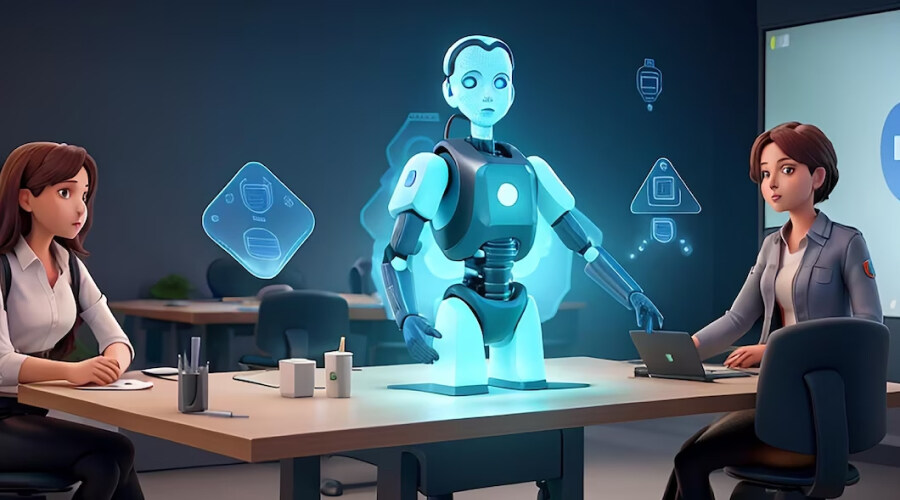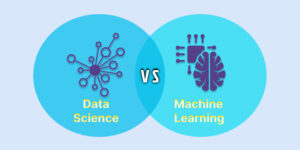
We are in an era of development and advancement. Gone are the days when people used to get placement with basic knowledge. Today, things have changed tremendously, and with that, the roles and responsibilities of UX designers have also changed.
The user experience has evolved significantly alongside the development of Artificial Intelligence (AI). If you’re planning to enter the market as a UX designer, then it’s crucial to know about Artificial Intelligence user experience.
Learning about the impact of AI on the field of UX design can help you grow in the field. If you’re wondering what are the roles and responsibilities of UX designers in the era of AI, read this post.
Here, we are going to describe in detail the roles and responsibilities of UX designers in this age of AI.
So, continue reading to explore how AI is influencing the future of UX design…
Table of Contents
- What is User Experience?
- AI Project Manager
- Roles and Responsibilities for UX Designers in AI
- Enhancing Human-Machine Interaction
- Building User Trust and Confidence
- Enabling Efficient Task Completion
- Transparency
- Develop Meaningful Interactions and Experiences
- Developing Ethical and Responsible Design
- Taking Care of Data Privacy
- Seamless Integration of Several Modes of Experience
- Create Personalized Experiences
- Bias and Fairness
What is User Experience?
User Experience, popularly known as UX, refers to the overall experience and satisfaction users have while interacting with an AI system. It includes factors like user-friendliness, effectiveness, intuitiveness, and emotional connection.
A good user experience can help businesses attract more and more customers to their business. All this can help them improve their bottom lines. Hence, it is crucial for artificial intelligence user experience designers to have comprehensive knowledge of AI and its capabilities. Having knowledge of AI’s capabilities, UX designers would be able to create amazing UX designs for their users.
AI and UX designer
AI has not just transformed UX roles but has also revolutionized the collaborative dynamics of digital teams during the development of digital products. AI-powered tools, with their advanced capabilities, can efficiently analyze extensive volumes of data, accurately predict outcomes, and seamlessly automate various processes.
With the help of AI-powered tools, UX designers in AI can enhance user experiences significantly. They can utilize AI-powered tools to make the design process more efficient.
AI-powered tools are revolutionizing design teams by automating routine design tasks. In addition, they are also used to analyze user behaviour, and gather valuable insights into user activity. These insights are then utilized to enhance design solutions and create more impactful designs. As AI-powered tools continue to revolutionize roles and responsibilities of UX designers, you can expect to see the emergence of new roles within your digital delivery team.
We are now going to discuss the roles that you may see within your digital delivery team; take a look…
AI Project Manager

Artificial intelligence’s primary function in project management is to enhance performance at various points in the project’s lifecycle. A personalized AI project manager manages and allocates resources. Also, they assign jobs to the most qualified individuals and find and hire the best people for your project.
In addition, AI project managers can use AI to expedite communication and provide personalized suggestions to team members based on their duties and responsibilities, encouraging a more productive and collaborative workplace.
A personalized AI project manager will supervise the progress of AI-enabled UX design projects at every phase of the project lifecycle. Collaboration with teams and ensuring projects are completed on schedule and to quality standards are also part of an AI project manager’s responsibilities.
In order to excel as an AI project manager, it is crucial to have a grasp of conventional project management methodologies, UX design principles, and AI technologies. AI project managers have access to a range of powerful AI tools. AI project managers will be able to quickly deliver projects and communicate efficiently with various teams by incorporating cutting-edge technology such as deep learning, automation, and natural language processing.
Roles and Responsibilities for UX Designers in AI
Here are the different responsibilities that UX designers have to take care of in order to create stunning designs…
1. Enhancing Human-Machine Interaction
When it comes to the roles and responsibilities of UX designers, enhancing human-machine interaction plays a crucial role. The UX design is crucial in creating a smooth and effective communication channel between humans and AI systems. Carefully created, user-specific interfaces make complex AI algorithms and features accessible to a wider audience, fostering wider acceptance and implementation.
2. Building User Trust and Confidence
More and more companies are now implementing AI to enhance user experience. It is the primary duty of a UX designer to integrate UX design artificial intelligence thoughtfully. Artificial intelligence (AI) systems frequently make critical decisions that directly affect users’ lives. These decisions can range from operating autonomous vehicles and providing medical diagnoses to offering financial recommendations. A thoughtfully crafted UX can help build user trust and confidence.
3. Enabling Efficient Task Completion
Efficiency is a crucial factor in delivering a seamless user experience (UX). UX designers can utilize AI algorithms to enhance designs to empower users to accomplish tasks with greater efficiency and effectiveness. Their main focus is on intuitive designs, simplified navigation, and personalized recommendations to boost users’ productivity and satisfaction.
4. Transparency
UX designer in AI needs to create designs/interfaces that effectively visualize and explain the algorithms and data processing happening behind the scenes. This way, users can gain a better understanding of the actions and outcomes of the AI system. This level of transparency helps build user confidence and fosters acceptance of AI technologies.
5. Develop Meaningful Interactions and Experiences
When it comes to the roles and responsibilities for UX designers, developing meaningful interactions and experiences is of utmost importance. UX designers need to take into consideration how AI systems engage with users and offer feedback. It is to ensure that the interactions are understandable, open, and reliable. UX designers have to keep their attention focused on the system in order to deliver the greatest possible user experience.
6. Developing Ethical and Responsible Design
As said earlier, AI can influence users’ decisions. AI systems have the ability to make significant judgments and have an impact on the lives of people. UX designers will play an important part in ensuring that ethical considerations are taken into account when designing applications. This includes addressing concerns like algorithmic bias, privacy, and security, as well as the overall influence that AI will have on society.
7. Taking Care of Data Privacy
Everything in the world is based on data today. Customers feed their private data, including bank details, when buying things online. As an AI UX designer, you MUST give utmost importance to data protection, informed consent, and transparent data handling practices. By incorporating privacy-centric design principles, you can effectively establish a strong sense of trust among your users.
8. Seamless Integration of Several Modes of Experience
Artificial intelligence makes the use of different modes of interaction, such as speech, gesture, and touch, possible when it comes to the best User Experience. UX designers’ job is to develop experiences that are seamless and user-friendly, enabling end users to interact with AI systems utilizing the modalities of their choice or, depending on the circumstances, a combination of modalities.
9. Create Personalized Experiences
AI systems can acquire knowledge from user behavior, preferences, and surroundings in order to create more personalized experiences. UX designers in AI can create impressive user experiences by catering to each user’s specific tastes and preferences through personalized content, suggestions, and interfaces.
10. Bias and Fairness
AI algorithms have the potential to perpetuate biases that exist in the training data unintentionally. It can result in outcomes that are discriminatory. As a UI/UX designer, you must create designs that are capable of identifying and addressing biases effectively. In order to reduce bias and promote fairness in AI systems, it is necessary to consider a broad variety of user perspectives and engage teams with diverse expertise.
Wrapping it up…
So, now we conclude our post titled Roles and Responsibilities for UX designers. We hope that you might have gained valuable insights into how AI has the potential to revolutionize UX design and will help you become an expert in the field.
It is crucial for UX designers to have a profound grasp of the user’s needs, wants, pains, concerns, and context in order to create seamless AI systems.
As AI continues to advance and influence our everyday experiences, the importance of UX designers’ roles and responsibilities will become more significant. As a UX designer, you ensure that AI technologies are embraced and integrated seamlessly into designs. By taking into account the users’ needs, issues, and other concerns, UX designers can develop interfaces that improve the user’s experience, build trust, and contribute to the progress of AI applications in different fields.
All in all, User experience in AI plays a significant role. Seeing the increased adoption of AI into all kinds of businesses, we can expect to see a significant increase in the utilization of AI in UX in the future as well. Artificial Intelligence in User Experience can help designers to effectively tackle design challenges and improve productivity while performing routine tasks.



![Top 15 Future Tech Career With Highest Pay in India [2025] Top 15 Future Tech Career With Highest Pay in India [2025]](https://www.weetechsolution.com/wp-content/uploads/2024/01/Future-Tech-Career-With-Highest-Pay-in-India-300x150.jpg)


